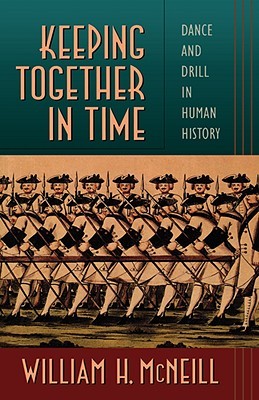Although it may seem useless in an age of computerized war, rhythmic marching was once as revolutionary as the Stealth bomber is in our own day. One of the oldest military practices in recorded history, it was long a crucial aspect of war in both the West and the East. Among the illustrations William H. McNeill offers is a picture of the Stele of the Vultures, a stone carving from the third millennium B.C. which depicts Eannatum of Lagash leading rows of troops in a siege of the city of Umma. Although such tactics grew popular in ancient Alesopotamia and Sumer, and Greek and Roman armies later adopted them, they eventually fell into disuse thanks to the advent of archery, which made it unwise for soldiers to form tight groups. A different kind of close-order drill caught on in the 16th century, thanks to the Dutch general Maurice of Orange. Like Carl J. Richard in The Founders and the Classics, McNeill shows us how far the influence of classical authors transcended their time and place. Inspired by the writings of Aelianus and Vegetius, Maurice trained his riflemen to load, aim, and fire their guns in unison, and his pikemen to swing their halberds according to a rhythm. Such tactics were unfamiliar, but lengthy training “made the necessary motions almost automatic and less likely to be disrupted by stress of battle.” Under Maurice’s command, formations of Dutch arquebusiers and pikemen—fired by the passions arising from prolonged rhythmic motion—won victories over seasoned Spanish forces who had defeated the French in Italy. The Spanish themselves adopted close-order drill after suffering a defeat at Roeroi in 1643 at the hands of French officers who had studied Maurice’s tactics. When Maurice’s orders were recorded by the talented engraver Jacob de Gheyn, who produced a book containing, on each page, a simple command and a corresponding picture, Maurice’s methods became famous all over Europe, and soon Russian, Italian, and German officers were training their men in close order drill. Using tactics akin to Maurice’s, Chinese armies succeeded in subduing the nomads of the East Asian steppe, thereby “ma [king] China what it is today, the world’s only surviving imperial state.” Why were these simple tactics so effective wherever they were applied? Among the psychological uses of “Keeping Together in Time,” McNeill says, was to whip up furies that made it easier to do difficult and risky things, like engaging enemy troops. (In a chapter on religious sects, McNeill points to the use of mass dances to achieve a state of euphoria.) McNeill does not claim to offer a thorough history of mass rhythmic movement, but only a treatise aimed at inspiring others to study this phenomenon.
[Keeping Together in Time, by William H. McNeill (Cambridge: Harvard University Press), 198 pp.. $22.00]

Leave a Reply